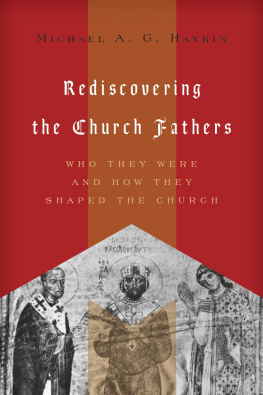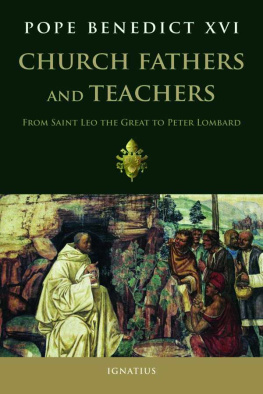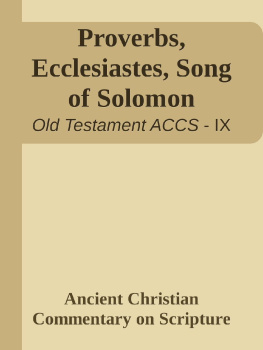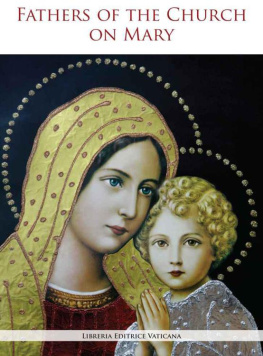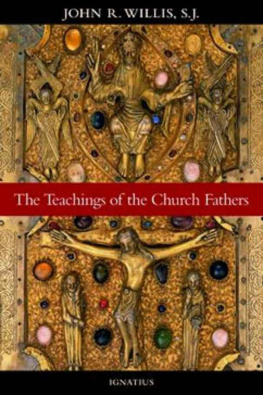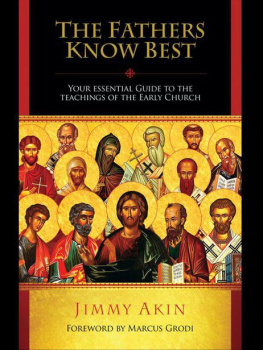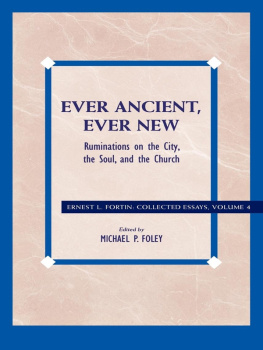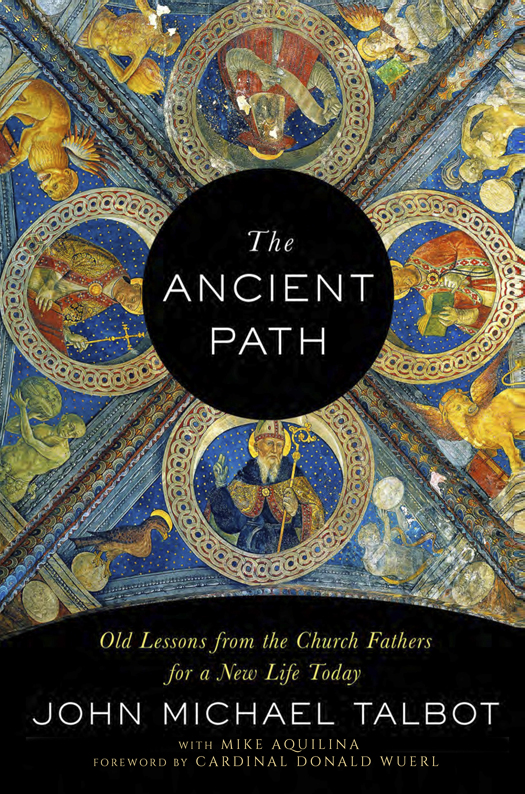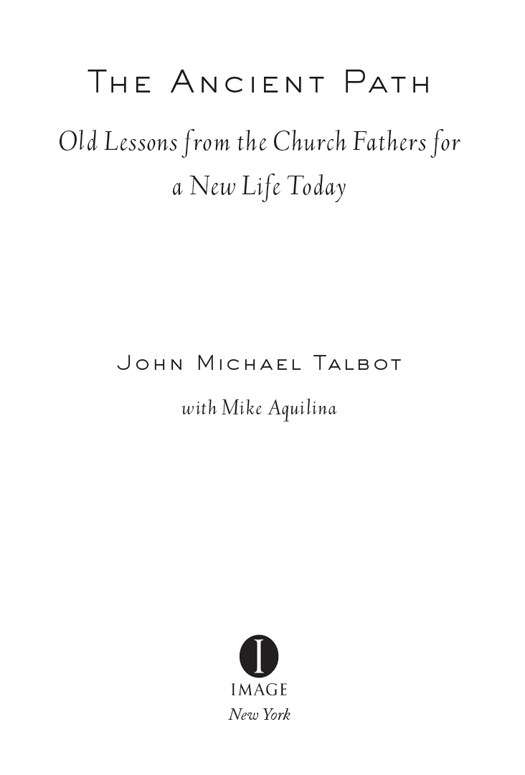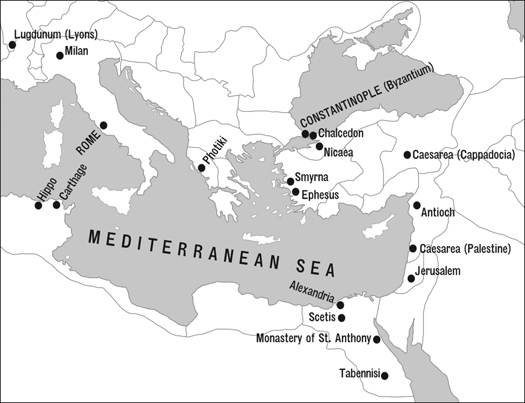Copyright 2015 by John Michael Talbot and Michael Aquilina, Jr.
All rights reserved.
Published in the United States by Image, an imprint of the Crown Publishing Group, a division of Random House LLC, a Penguin Random House Company, New York.
www.crownpublishing.com
IMAGE is a registered trademark and the I colophon is a trademark of Random House LLC.
Library of Congress Cataloging-in-Publication Data is available upon request.
ISBN 978-0-8041-3995-3
eBook ISBN 978-0-8041-3996-0
Map by Christopher Bailey/Serif Press
Jacket design by Kristen Vasgaard
Jacket artwork: Bridgeman Art Library
Author photographs: (John Michael Talbot) Peggy Lodewyks; (Mike Aquilina) Marie-Catherine Photography, Malibu, California
v3.1
Dedicated to the memory of Father Martin Wolter, OFM, my spiritual father in the Church and in monastic life, who pointed me to the early Church Fathers
C ONTENTS
F OREWORD
J OHN M ICHAEL T ALBOT is best known as a musician and composer. But he is also a writer, builder, and founder of an integrated monastic community. As a Catholic layman, he is a devoted husband, father, and grandfather. He has exercised these roles in the latter part of the twentieth century and the early part of the twenty-first. Yet he has drawn inspiration for each of these diverse roles from authors who wrote many centuries ago. Johns life and work have been shaped by the Fathers of the Church.
With all of the sociological studies, scientific writings, and theological reflections available today, what makes this bookwhich reaches back over centuries for its inspirationsuch a valuable and engaging work?
There are ultimate and basic questions that each person at some point confronts, and these questions do not change over time. What is the meaning and purpose of life? How do I relate to God? How shall I live? These are always with us. As we look for wisdom to guide us, among the most enlightening and most convincing voices are those found in the writings of the Fathers of the Church. These are our ancestors in the faith, the remote founders of the Christian heritage that is ours today. We, a pilgrim people traveling through an often confusing secular society, are always in need of direction, encouragement, and good example.
The American philosopher George Santayana said: Those who cannot remember the past are condemned to repeat it. If these words have any meaningand I think we need to agree they dothen we must look to the past for much of our direction, encouragement, and good example. John Michael Talbots book The Ancient Path does just that. It is directed primarily at adults today who would enjoy a popular narrative of the life and teaching of the early Fathers of the Church. Rather than a classroom or technical analysis, this easily readable book provides a profile of the Fathers and highlights why their wisdom should continue to be an inspiration for us today.
In reading The Ancient Path, I could not help but think of the great patristic scholar Father Johannes Quasten, whose multivolume Patrology is still a standard reference in the field. Father Quasten and I collaborated, together with other colleagues, on a catechism entitled The Teaching of Christ. He made sure that the Fathers were cited authoritatively and as often as possible. It was his emphasis on the Fathers that helped make that catechism such a beautiful reflection of the faith, well grounded in the Churchs tradition. His focus was something I tried to carry with me after our work together was completed. Now comes John Michael Talbots work on the Fathers, which, once again, opens up for us the depth of their understanding of the faith. Thus the richness of their spirituality continues to shed light on the path of Christians seeking to walk with the Lord.
Among the many outstanding features of this bookand one for which it can be recommended to clergy as well as laityis Talbots ability to portray the humanity of the Church Fathers. The authors clear, engaging, yet concise style is at its best when he is describing the human qualities and characteristics of the early Church heroes as well as the people with whom they were associated.
The language of the Fathers sometimes seems archaic to us today, as do their cultural markers. Technology has changed so much in our day-to-day living. Yet human nature has not changed. Humanity still struggles against the same deadly sins, and we still strive to attain the same virtues. Jesus Christ remains the answer to the longings of the human heart, and the Fathers preached him most eloquently.
They evangelized a world and converted it in the course of just a few centuries. I daresay we have something to learn from them. The Acts of the Apostles tells us that before Jesus returned to his Father in glory, he charged his disciples, You will be my witnesses (Acts 1:8). That same mission echoes in our ears and hearts today. It was made clear at the Synod for the New Evangelization for the Transmission of the Christian Faith, which met in Rome in October 2012, that the continuation of the mission of Christ the Redeemer, which began with the great commissioning following his death and resurrection, is something that all of us are called to do today.
We are challenged not only to participate in the life of the Church, but actually to manifest the coming of Gods kingdom in our world, and so to grow in spiritual stature. The call is to bring all things to Christ and make this temporal order a truly blessed expression of Gods love, truth, and justice.
Throughout The Ancient Path, we find this same urgency and commitment. This short but powerful reflection on the wisdom of the Church Fathers invites us into the ongoing mission of spreading the Good News.
For two millennia, it has been the work of the whole Church, all the people of God, every member of the Body of Christ, to show forth to the world the presence of our Savior and Lordwho is one of us and is also the Son of God. We are called to be, in our lives, an epiphany of the Lord to those we encounter, a bright, shining light so that others might be led to him. We are called to be like the great star of Bethlehem that led the wise men to Jesus on that glorious Christmas day.
The kingdom of God that the Church Fathers sensed so poignantly offers humankind a different way of seeing life and the world around us. Christ points us to a fuller vision of life than that offered by the secular society that lives as if God did not exist. This was true in the very beginnings of the Church, often manifested in the days of the Fathers, and the task of pointing out the way has been a challenge of the Church for twenty centuries. In the Sermon on the Mount we hear of a new way of lifea way of beatitudeone that involves the merciful, those who hunger and thirst for righteousness, those who mourn, the peacemakers, the poor in spirit (Matthew 5:3-16). Reflecting upon this Good News gives us a whole new way of looking at life. John Michael Talbot sheds light on this path in his reflections on the lives of the Fathers. Our new way of seeing life through the lens of the Gospel, through the lens of the Fathers, offers us hope, stirring within us expectations of a fuller life and a better world.



